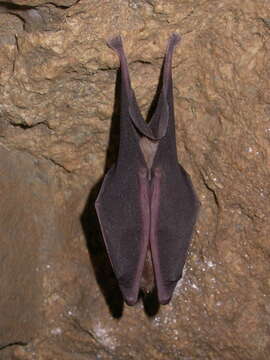Rhinolophus ferrumequinum - Greater Horseshoe bat (2321181688)

Description:
Summary.mw-parser-output table.commons-file-information-table,.mw-parser-output.fileinfotpl-type-information{border:1px solid #a2a9b1;background-color:#f8f9fa;padding:5px;font-size:95%;border-spacing:2px;box-sizing:border-box;margin:0;width:100%}.mw-parser-output table.commons-file-information-table>tbody>tr,.mw-parser-output.fileinfotpl-type-information>tbody>tr{vertical-align:top}.mw-parser-output table.commons-file-information-table>tbody>tr>td,.mw-parser-output table.commons-file-information-table>tbody>tr>th,.mw-parser-output.fileinfotpl-type-information>tbody>tr>td,.mw-parser-output.fileinfotpl-type-information>tbody>tr>th{padding:4px}.mw-parser-output.fileinfo-paramfield{background:#ccf;text-align:right;padding-right:0.4em;width:15%;font-weight:bold}.mw-parser-output.commons-file-information-table+table.commons-file-information-table,.mw-parser-output.commons-file-information-table+div.commons-file-information-table>table{border-top:0;padding-top:0;margin-top:-8px}@media only screen and (max-width:719px){.mw-parser-output table.commons-file-information-table,.mw-parser-output.commons-file-information-table.fileinfotpl-type-information{border-spacing:0;padding:0;word-break:break-word;width:100%!important}.mw-parser-output.commons-file-information-table>tbody,.mw-parser-output.fileinfotpl-type-information>tbody{display:block}.mw-parser-output.commons-file-information-table>tbody>tr>td,.mw-parser-output.commons-file-information-table>tbody>tr>th,.mw-parser-output.fileinfotpl-type-information>tbody>tr>td,.mw-parser-output.fileinfotpl-type-information>tbody>tr>th{padding:0.2em 0.4em;text-align:left;text-align:start}.mw-parser-output.commons-file-information-table>tbody>tr,.mw-parser-output.fileinfotpl-type-information>tbody>tr{display:flex;flex-direction:column}.mw-parser-output.commons-file-information-table+table.commons-file-information-table,.mw-parser-output.commons-file-information-table+div.commons-file-information-table>table{margin-top:-1px}.mw-parser-output.fileinfo-paramfield{box-sizing:border-box;flex:1 0 100%;width:100%}} Description: Horseshoe bats seems to be extremely sensitive to disturbance during the winter (particularly the lesser horseshoe bat) and taking pictures of these species could be very dangerous for the survival of the individuals. The non natural awakening of an hibernating bat provoke the burning of an important part of the lipid storage that the bat needs to stay alive during all the winter. When you take pictures, light, ultrasounds of the flash, warmth of the photographer that could change the cave temperature, etc.. increase the probability to provoke the awakening of the bat. This individual has been photographed in a touristic cave and It seems that he was habituated to the noise and light. The hind legs are completely relaxed. This is an indication that the individual was not stressed and was still asleep. Horseshoe bats have a reflex contraction of the hind legs when stressed during the overwintering. Date: 15 February 2008, 16:07. Source: Rhinolophus ferrumequinum - Greater Horseshoe bat Uploaded by Jacopo Werther. Author: Gilles San Martin from Namur, Belgium.
Included On The Following Pages:
- Life (creatures)
- Cellular (cellular organisms)
- Eukaryota (eukaryotes)
- Opisthokonta (opisthokonts)
- Metazoa (Animal)
- Bilateria
- Deuterostomia (deuterostomes)
- Chordata (Chordates)
- Vertebrata (vertebrates)
- Gnathostomata (jawed fish)
- Osteichthyes
- Sarcopterygii (Lobe-finned fishes)
- Tetrapoda (terrestrial vertebrates)
- Amniota (amniotes)
- Synapsida (synapsids)
- Therapsida (therapsid)
- Cynodontia (cynodonts)
- Mammalia (mammals)
- Theria (Therians)
- Eutheria (eutherian)
- Placentalia (placental)
- Boreoeutheria
- Laurasiatheria
- Scrotifera
- Chiroptera (bats)
- Rhinolophoidea
- Rhinolophidae (horseshoe bats)
- Rhinolophus (Horseshoe Bats)
This image is not featured in any collections.
Source Information
- license
- cc-by-sa-3.0
- copyright
- Gilles San Martin
- creator
- Gilles San Martin
- source
- Flickr user ID sanmartin
- original
- original media file
- visit source
- partner site
- Wikimedia Commons
- ID


